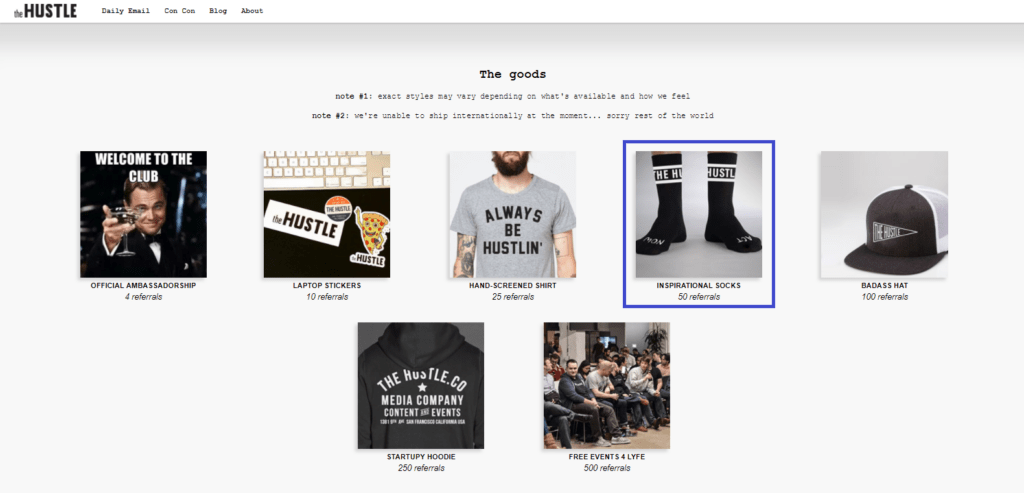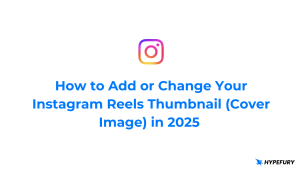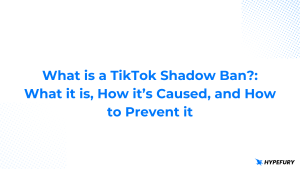Content marketing is all about creating valuable and informative content that attracts, engages, and converts your target audience. Once you’ve chosen the right platform for your newsletter and began writing it, you want to see it thrive. One effective way to grow your newsletter audience and expand your reach is through referral programs.
Referral programs incentivize your current subscribers to invite their friends and colleagues to join your newsletter list.
Not only do such programs help you acquire new subscribers, but they also foster a sense of community and loyalty among your current subscribers.
In this blog post, we’ll explore the benefits of referral programs and how you can use them to grow your newsletter audience.

It’s worked for the best and most successful newsletters out there
The Hustle, Morning Brew, and Axios are all daily newsletters that have seen significant growth through the use of referral programs. These involve encouraging existing subscribers to forward the newsletters to people they know, using word-of-mouth marketing to attract new readers.
The Hustle gained 300,000 subscribers in just a few months thanks to its referral program, while Morning Brew saw its subscriber base grow from 100,000 to 1.5 million in just 18 months, with 30% of its initial subscribers coming from referrals.
Axios, known for its concise, informative articles on politics and media, has also seen success with its referral program, using it to acquire new subscribers and continue expanding its reader base.

Why not create your own?
There are two main reasons why many newsletters do not use referral programs to grow their subscriber base.
Firstly, they may be unsure of what incentives and rewards would be most appealing to their readers.
Secondly, they may lack the time, experience, or technical skills to create a referral program that functions effectively. These challenges can make it difficult for newsletters to leverage the power of word-of-mouth marketing.
8 reasons why you probably need a referral program
Word-of-mouth marketing is highly trusted
Referral programs rely on word-of-mouth marketing, which is widely considered the most trusted form of advertising. Hearing about a newsletter from a friend will simply always be more exciting than finding out about it through an ad!
Cost-effective
Referral programs can be an economical way to acquire new subscribers, as they rely on existing subscribers to spread the word about your newsletter rather than requiring expensive advertising campaigns.
Personalized
Referral programs allow you to customize incentives and rewards to align with the interests of your subscribers, making the program more personal and, therefore, more likely to be effective. It’s a person to person system!
Drivers of customer loyalty
By rewarding your subscribers for referring new subscribers, you can increase their loyalty and engagement with your newsletter.
Easy to track and measure
Many referral program software options include tools for tracking and analyzing referral data, making it easy to measure the success of your program and make adjustments as needed.
Reach new audiences
Of course, the purpose of referral programs is to grow your audience. By encouraging your subscribers to share your newsletter with their friends and colleagues, you can expand your readership.
Improve customer retention
Referral programs drive loyalty, and loyal subscribers who are invested in the success of your newsletter are more likely to stick around and continue reading!
Lead to long-term growth
By consistently acquiring new subscribers through referrals, you can achieve sustainable and long-term growth for your newsletter. The sky’s the limit!
Programs you can use to manage your referral program
There are a number of software options available for newsletters looking to implement a referral program. Here are six options to consider:
Beehiiv
This software is designed specifically for newsletters. It allows users to easily create and manage a referral program within their existing email marketing platform.
ConvertKit
With ConvertKit, newsletters can set up a referral program and track referrals through customizable landing pages. The platform also offers a range of tools to help with email automation and list management.
Ghost
This open-source publishing platform includes a referral program feature allowing newsletters to reward their readers for referring new subscribers.
Sparkloop
Sparkloop is a referral marketing platform that integrates with a range of email marketing tools. It allows newsletters to track and reward referrals through customizable links and landing pages.
Paved
This referral marketing software is designed for newsletters and offers a range of features including customizable referral forms, automatic reward distribution, and the ability to track referrals in real-time.
ReferralRock
With this platform, newsletters can create and manage a referral program through customizable referral pages and automated reward distribution. It also includes tools for tracking and analyzing referral data.
Lemon Squeezy
Lemon Squeezy is launching an affiliate program in January 2023 that has email marketing built in. For creators who want to align their sales of digital products with newsletter marketing and affiliate management, Lemon Squeezy offers a broader platform.
Make sure to consider the specific needs and goals of your newsletter when choosing the right platform for your business.
Offering sweet merch is always a good idea — if you can budget for it
Offering giveaways and merchandise as rewards for participating in a newsletter referral program can be a great way to incentivize people to participate. People love to receive tangible rewards, such as physical products or prizes!
When someone is given the opportunity to receive an actual product in exchange for their participation, it can feel more rewarding and satisfying than simply earning a digital reward or points. And naturally, this can lead to increased motivation and engagement in the referral program.
Giveaways and merchandise can also serve as a form of social currency – people often like to show off their prizes (perhaps in a grateful tweet or Instagram story) or display them in their home or office. This sense of pride and accomplishment can further encourage people to participate!
Another reason that giveaways and merch can be effective incentives is that they can appeal to a wide range of people.
Different individuals may have different preferences when it comes to rewards, and offering a variety of options can make it more likely that you’ll appeal to the interests of a diverse group of participants.
Consider the option of merch and giveaways if you’re looking to boost your referral program!
Success factors for a referral program
There are several key factors that contribute to the success of a referral program for an email newsletter.
Some of the most important to consider include offering personalized incentives and rewards (as explained above), leveraging cost-effective marketing tactics, and tracking and analyzing referral data to optimize the program’s effectiveness.
By focusing on these factors, newsletters can create a program that drives loyalty, engagement, and long-term growth.
Here are some more factors to think about:
Clear and compelling incentives
In order for a newsletter referral program to be successful, it’s important to offer incentives that are clear and compelling to potential participants. This could include tangible rewards (such as merchandise or prizes), or digital rewards such as points or discounts.
Easy-to-use referral system
Make sure that your referral system is straightforward enough, so as to make it more likely that people will participate.
Strong communication and marketing
Don’t underestimate the importance of communicating well about your referring program to potential participants. How could they take part if they don’t hear about it? This could include email campaigns, social media posts, or other forms of outreach.
Flexible and adaptable program
It is important for a referral program to be flexible and adaptable in order to respond to the changing needs and preferences of its participants. Make sure to allow a range of different rewards or to allow participants to choose their preferred reward.
Regular engagement and updates
In order to keep participants engaged and motivated, you must provide regular updates and communication about your program. You can use newsletters or email updates, and of course social media to share news and updates.
Examples of successful referral programs in different industries
The New York Times, a newspaper publisher, Mailchimp, an email marketing platform, and Spotify, a music streaming service, may seem quite different at first glance. However, they all demonstrate that a well-structured and thought-out referral program can be an effective way to promote and grow a brand. Regardless of the industry or target market, a referral program can be a valuable tool for businesses looking to engage their customers and attract new ones.
The New York Times
The New York Times implemented a referral program that offered incentives to both the referrer and the referred. For every friend that a current subscriber referred to the newspaper, both the referrer and the referred received a free week of access. This program was successful because it offered a clear and compelling incentive for both parties, and it was easy to participate in.
Mailchimp
Mailchimp’s referral program offered rewards to both the referrer and the referred. For every friend that a current user referred to the platform, the referrer received a $30 credit towards their account, and the referred received a $30 discount on their subscription. This strategy worked very well since it offered a tangible reward that was easy to understand and desirable to both parties.
Spotify
Spotify used to have a referral program that offered a free month of premium service to both the referrer and the referred. It proved very successful because it offered a clear and compelling reward that was easy to understand and desirable to both parties. It was also easy for users to participate since they simply had to share a referral link with their friends. In fact, that referral program worked so well and Spotify grew so much that it no longer sees the need for a referral program!
Read more tips from Hypefury about how to grow your newsletter thanks to Twitter





